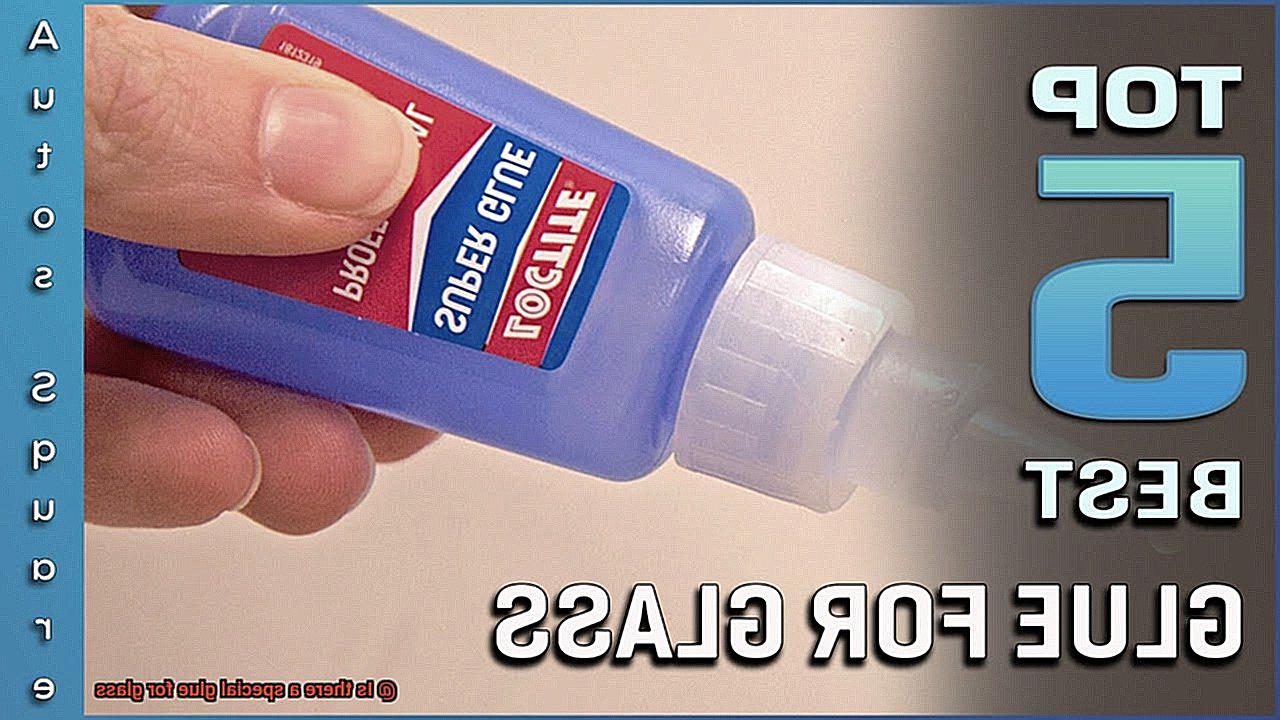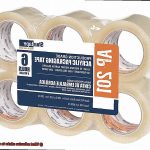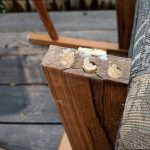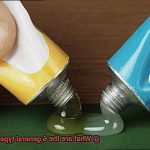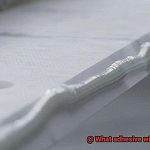Step into the enchanting realm of glass, where elegance and beauty intertwine. Whether you’re a DIY wizard or a seasoned craftsman, the art of bonding glass is an essential skill. But here’s the twist – finding the right glue for this delicate material can be as tricky as untangling a knot of unicorn hair.
Fear not, fellow glass enthusiasts. In this captivating blog post, we embark on a thrilling quest to uncover the best glues specifically crafted for glass. Prepare to be mesmerized by transparent liquid adhesives that work like magic and UV-cured formulations that defy gravity. We’ll navigate through a labyrinth of options, shedding light on their strengths and weaknesses.
But wait, there’s more. As your trusty guide, we’ll equip you with invaluable tips and tricks to ensure your glass projects shine brighter than a dragon’s hoard. Whether you’re rescuing shattered glassware or conjuring up extraordinary glass art, this guide will unveil the secret potion that perfectly suits your needs.
So, gather ’round, intrepid adventurers, as we unlock the mysteries of glass glues and embark on an unforgettable journey towards seamless and gratifying bonding projects. Are you ready?
Let’s dive in.
What is Glass?
Contents
Its composition consists of silica, soda ash, and limestone, which are melted together at high temperatures and rapidly cooled through a process called quenching. This cooling process prevents the formation of a crystalline structure and results in the creation of an amorphous solid.
The versatility of glass is unparalleled, stemming from its transparency that allows light to pass through effortlessly and its smooth surface that imparts a glossy appearance. Furthermore, glass possesses resistance to corrosion and chemical reactions, making it suitable for a wide range of applications.
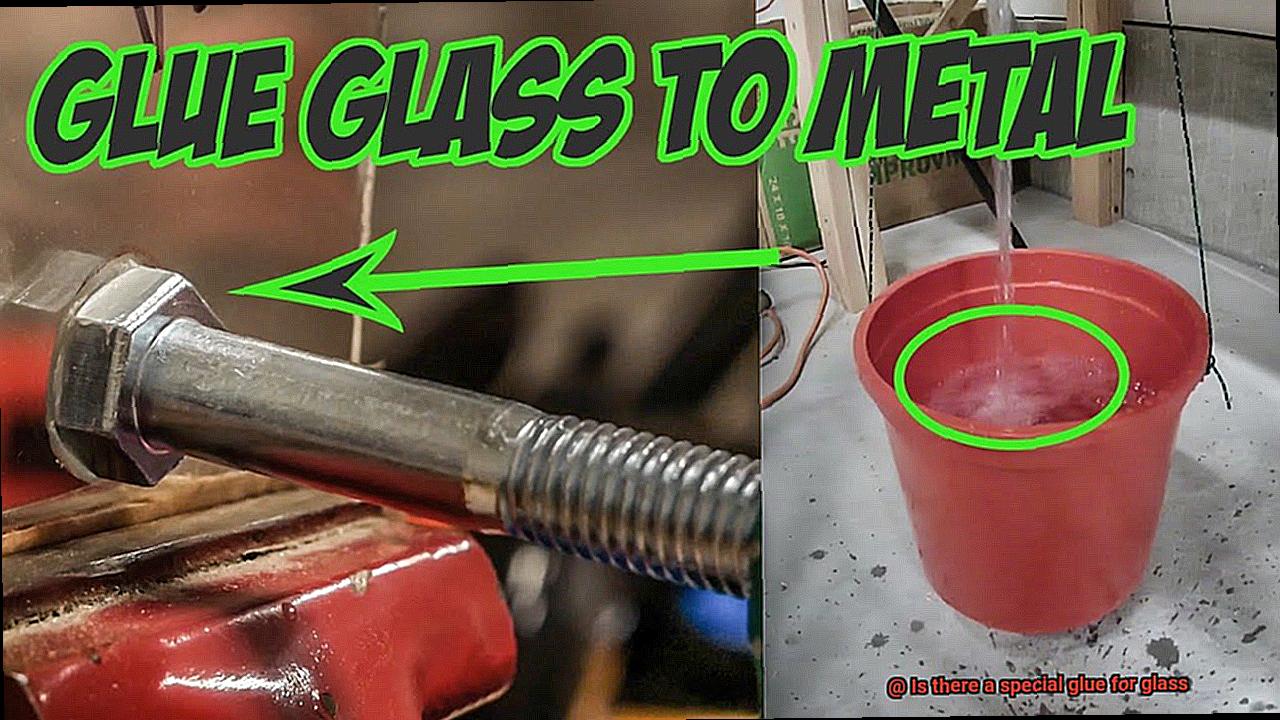
Different types of glass exist based on their composition and manufacturing process. Soda-lime glass, the most prevalent type, finds use in windows, bottles, and containers. On the other hand, borosilicate glass exhibits high resistance to thermal shock, making it ideal for laboratory equipment and cookware.
Adhesion to glass presents a unique challenge due to its nonporous nature. Unlike porous materials like wood or paper, glass lacks microscopic holes or gaps that facilitate bonding. To overcome this obstacle, specialized glues or adhesives have been developed specifically for bonding glass. These adhesive formulations contain ingredients like cyanoacrylates or epoxy resins that promote strong and durable bonds to glass surfaces.
In addition to specialized glues, certain factors should be considered when bonding glass. Proper surface preparation is essential, ensuring that the glass surface is clean and free from contaminants or oils that may hinder the bonding process. Some adhesives may require roughening or etching of the glass surface to enhance adhesion.
Moreover, the type of glass being bonded and the intended application should be taken into account. Different adhesives exhibit varying compatibility with specific types of glass, such as tempered or laminated glass. It is crucial to select an adhesive that is suitable for the specific glass composition and intended use.
What Makes Glass Difficult to Bond?
First and foremost, the smooth surface of glass is one of the primary reasons for its bonding difficulty. Unlike other materials like metal or plastic, glass lacks surface irregularities or texture that can enhance adhesion. The absence of these features limits the contact area between the adhesive and the glass surface, reducing the overall strength of the bond. It’s like trying to stick two pieces of glass together without any texture – it’s like trying to make two magnets stick together without any magnetic force.
Another factor that contributes to the difficulty in bonding glass is its low surface energy. Surface energy refers to the amount of energy required to break the intermolecular bonds at the surface of a material.
Glass has a relatively low surface energy compared to other materials, making it more resistant to wetting by most adhesives. This lack of wetting reduces the contact area between the adhesive and the glass surface, leading to weaker bonds.
Furthermore, the brittleness of glass poses a significant challenge when it comes to bonding. Glass is a fragile material that can easily crack or shatter under stress. Traditional bonding methods that involve mechanical fastening or high-temperature processes can induce stress concentrations in the glass, leading to failure. It’s like trying to glue together two delicate pieces of porcelain – any slight movement or pressure can cause them to break.
In addition to these inherent properties of glass, environmental factors can also affect its bondability. Moisture, temperature variations, and exposure to UV radiation can all weaken the adhesive bond over time. Glass expands and contracts more than other materials with temperature changes, which can strain the adhesive bond and cause it to fail. Therefore, it is crucial to select adhesives that can withstand these environmental challenges and provide durable bonds.
So, how can we overcome these challenges and successfully bond glass? Specialized glues have been developed to address these specific issues. These glues contain powerful ingredients that create strong and durable bonds to glass surfaces. They are designed to penetrate the smooth surface of glass and form strong intermolecular bonds. Additionally, they have high surface energy to ensure proper wetting and adhesion.
By using these specialized glues and following proper surface preparation techniques, you can achieve successful bonds with glass.
Types of Glue for Glass Bonding
Glass is a notoriously difficult material to bond together due to its smooth and non-porous surface.
There are special glues available specifically designed for bonding glass that can overcome this challenge and create a strong and lasting bond.
One popular type of glue for glass bonding is cyanoacrylate adhesive, commonly known as super glue. This powerful adhesive is well-known for its ability to create an instant and secure bond. Super glue works by reacting with moisture on the surface of the glass, allowing it to quickly dry and form a strong connection. It is perfect for small repairs or projects that require fast bonding of glass pieces.
Epoxy adhesive is another commonly used glue for glass bonding. This type of glue provides a strong and durable bond, making it suitable for a wide range of glass applications. Epoxy typically comes in two parts: the epoxy resin and a hardener.
UV-curing adhesives are also widely used for bonding glass. These adhesives require exposure to ultraviolet light to cure, resulting in a strong and clear bond. UV-curing adhesives are often used in industries such as electronics and optics, where precision bonding is required. They offer fast curing times and high strength, making them ideal for bonding glass components together.
Silicone-based adhesives are another popular choice for bonding glass. Silicone offers excellent flexibility and resistance to water and heat, making it ideal for applications where the bonded objects may experience movement or thermal expansion.
Silicone adhesives provide good adhesion to glass surfaces and are commonly used in household applications, such as repairing broken glassware or attaching mirrors to walls.
Cyanoacrylate Adhesive (Super Glue)
When it comes to bonding glass surfaces, finding the perfect adhesive can be a challenge. Glass is smooth and stubborn, making it difficult to create a lasting bond. But fear not. There is a glue that can conquer even the most unyielding glass, creating an unbreakable bond. Enter cyanoacrylate adhesive, commonly known as super glue. In this comprehensive guide, we will explore the advantages and considerations of using super glue for bonding glass surfaces.
Advantages of Cyanoacrylate Adhesive for Glass Bonding:
- Lightning-Fast Curing Time: Unlike other glues that may take hours or even days to fully cure, super glue dries and forms a strong bond within seconds. This rapid curing time makes it highly convenient for quick repairs or projects where time is of the essence. No more waiting around for your adhesive to set.
- Unparalleled Strength: Cyanoacrylate adhesive creates a bond that can withstand considerable stress and strain. When applied correctly, super glue provides a reliable and long-lasting bond for glass surfaces. Whether you’re repairing a shattered vase or creating intricate glass art, super glue ensures your project withstands the test of time.
Considerations for Successful Glass Bonding:
- Pristine Surface Preparation: Properly preparing the glass surface is crucial for successful bonding. Ensure the surface is clean, dry, and free from any grease, dust, or contaminants. Wipe the glass with a clean cloth and use alcohol or acetone to remove any residue or oils that could compromise the adhesive’s effectiveness.
- Less is More: The secret to effective super glue application is using it sparingly when bonding glass. A small amount is usually sufficient to create a strong bond. Excessive application may result in the glue spreading beyond the intended area or leaving visible residue. Precision and restraint are key when using super glue on glass surfaces.
- Specialized Glasses: While super glue is effective for most glass types, some specialty glasses, such as borosilicate or tempered glass, may require specialized adhesives specifically designed for those materials. It is crucial to consult with professionals or refer to the manufacturer’s recommendations when dealing with these types of glass.
Epoxy Adhesive
When it comes to bonding glass surfaces, professionals rely on the unparalleled strength and durability of epoxy adhesive. With its remarkable properties and versatility, this specialized glue offers a range of advantages that make it the top choice for various glass-related projects. In this comprehensive guide, we will delve into the benefits and considerations of using epoxy adhesive on glass surfaces, providing expert insights to help you achieve seamless and long-lasting bonds.
Advantages of Epoxy Adhesive for Glass Bonding:
Crystal Clear Bond:
Epoxy adhesive creates an invisible bond that seamlessly merges with the glass surface, rendering it virtually undetectable. This feature is crucial for achieving aesthetically pleasing results in projects like glass artwork or furniture, where an unobtrusive bond is essential.
Exceptional Resistance:
Epoxy adhesive boasts outstanding resistance to moisture, heat, and chemicals, making it impervious to harsh conditions both indoors and outdoors. It maintains its bond strength over time, ensuring a long-lasting and reliable connection that can withstand the test of time.
Versatile Applications:
From bonding glass to glass to adhering it to other materials like metal or wood, epoxy adhesive excels in versatility. Its strong adhesion properties make it suitable for a wide range of projects, including repairing broken glass items or creating intricate stained glass designs.
Considerations for Successful Bonding:
Surface Preparation:
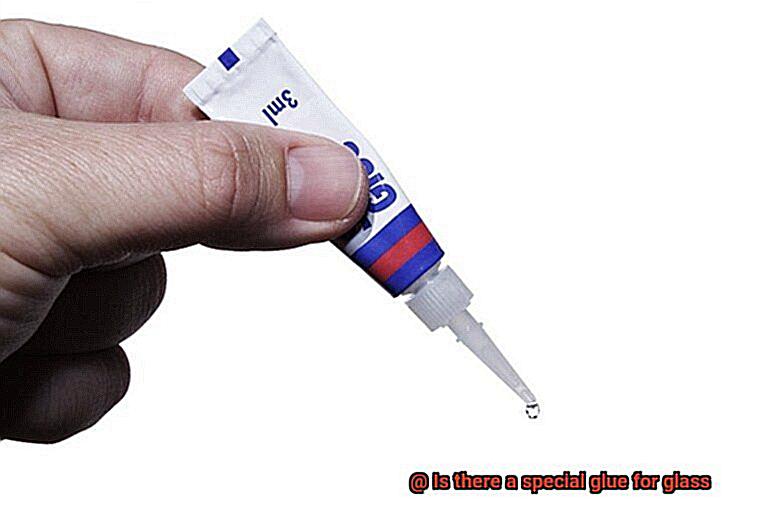
Achieving optimal adhesion requires thorough cleaning of the glass surfaces before applying epoxy adhesive. Remove any dirt, dust, or grease that could impede the bonding process. A pristine surface ensures optimal adhesion and enhances the durability of the bond.
Primer or Activator:
Certain epoxy adhesives may necessitate the use of a primer or activator on the glass surface to enhance bonding capabilities. It is crucial to follow the manufacturer’s instructions and recommendations to ensure the best results.
Curing Time:
Epoxy adhesives typically require sufficient curing time to reach their maximum bond strength. Depending on the product, this can range from a few hours to several days. Patience is key to ensure the bond is fully cured before subjecting the glass to stress or load.
UV-Curing Adhesives
UV-curing adhesives are a revolutionary type of adhesive that have transformed the world of glue applications. These adhesives offer a multitude of advantages that make them the go-to choice for bonding glass and other transparent materials.
One of the standout features of UV-curing adhesives is their rapid curing time. Unlike traditional glues that can take hours or even days to fully cure, UV adhesives harden almost instantly when exposed to ultraviolet light.
This means that you can say goodbye to lengthy wait times and hello to increased productivity. Whether you’re working on a small DIY project or a large-scale industrial application, UV-curing adhesives will get the job done in no time.
In addition to their speedy curing process, UV adhesives also boast exceptional bond strength. Once cured, these adhesives form strong and durable bonds that can withstand extreme conditions, including temperature fluctuations and exposure to chemicals. This makes them an ideal choice for bonding glass, which requires a reliable adhesive that can maintain its integrity over time.
Transparency is another remarkable advantage of UV-curing adhesives. When bonding glass, it is crucial to maintain its clarity and aesthetics. Traditional glues often leave behind visible residue or create hazy spots, detracting from the overall look of the glass. UV adhesives, on the other hand, cure to a clear and transparent finish, ensuring that your glass projects look flawless.
However, it’s important to note that considerations must be taken into account when using UV-curing adhesives for glass bonding. It is crucial to ensure that the adhesive is compatible with the specific type of glass being bonded.
Some UV adhesives are specifically formulated for glass substrates and offer enhanced adhesion and durability. Following the manufacturer’s instructions for proper application and curing is essential to achieve optimal results.
Silicone-Based Adhesives
Silicone-based adhesives are the superheroes of the glue world, especially when it comes to bonding glass. Made from a combination of silicone polymers, these adhesives possess the flexibility and durability required for glass applications. But what exactly sets them apart from other adhesives?
One of the most remarkable features of silicone-based adhesives is their exceptional resistance to extreme temperatures, moisture, and chemicals. Whether your glass creation finds itself in scorching summer heat or a damp bathroom, these adhesives will hold strong. Not only that, but they won’t deteriorate over time, even when exposed to harsh cleaning agents.
What makes silicone adhesives truly versatile is their ability to create a strong bond with various materials. Whether you need to bond glass to glass, glass to metal, or even glass to plastic or wood, silicone-based adhesives have got you covered. And with options available in liquid, gel, or paste form, you can choose the consistency that works best for your project.
To maximize the performance of silicone-based adhesives, it is crucial to ensure that the surfaces being bonded are clean and free from contaminants. This preparation step is vital in creating a reliable bond. Additionally, applying the adhesive in thin layers yields better results.
After application, silicone-based adhesives require some curing time to reach their full strength. The duration of this process can vary depending on the specific product and environmental conditions. Therefore, it is essential to carefully follow the manufacturer’s instructions for optimal results. In some cases, using a primer may be necessary on certain surfaces to enhance bonding strength.
Choosing the Right Adhesive for Bonding Glass
Glass is a stunning material that adds elegance and beauty to any project. However, when it comes to bonding glass, choosing the right adhesive is crucial for achieving a strong and durable bond. In this article, we will delve into the various types of adhesives suitable for glass bonding and provide you with valuable tips to ensure your projects stand the test of time.
Epoxy Adhesives: The Powerhouse Bonders
Epoxy adhesives are renowned for their exceptional bonding strength and resistance to moisture and chemicals. These adhesives create a robust bond between glass surfaces, making them ideal for glass-to-glass or glass-to-metal applications. To ensure optimal results, it is important to follow the manufacturer’s guidelines for proper mixing ratios and curing times.
UV-Curing Adhesives: The Speedy Solution
When time is of the essence, UV-curing adhesives are your go-to choice. These adhesives cure within seconds when exposed to ultraviolet light, providing rapid assembly and production times. They are commonly used in industries where efficiency is paramount.
Silicone Adhesives: The Versatile Heroes
Silicone adhesives offer excellent flexibility, temperature resistance, and durability, making them perfect for applications where bonded glass may undergo expansion or contraction. Additionally, they provide exceptional resistance to moisture and UV radiation, ensuring long-lasting bonds.
Special Formulations for Decorative Glass
For projects involving decorative or stained glass, special adhesive formulations are available. These adhesives have low viscosity, allowing them to flow easily into narrow gaps and crevices while maintaining the aesthetics of the glass.
Surface Preparation is Key
Before applying any adhesive, proper surface preparation is essential. Ensure that the glass surfaces are clean, free from dust, grease, or any other contaminants that may compromise the bond. Some adhesives may require the use of primers or surface activators to enhance adhesion.
Consider Mechanical Fasteners
In high-stress or load-bearing situations, it may be necessary to reinforce the adhesive bond with mechanical fasteners such as screws or clips. This provides additional strength and stability to the bond, ensuring its longevity.
Safety First
Always prioritize safety when working with adhesives. Some adhesives may contain volatile chemicals or emit fumes during the curing process. Work in a well-ventilated area, wear protective gloves and goggles, and carefully read and follow the manufacturer’s safety instructions.
5fRUOt9KFkI” >
Also Read: How to Glue Rubber to Glass? – Glue Things
Conclusion
Yes, there is indeed a special glue specifically designed for glass.
This specialized adhesive is formulated to bond glass surfaces effectively and securely. Unlike regular glues, which may not adhere well to glass or may leave visible residue, this special glue ensures a strong and transparent bond.
It provides the necessary strength to hold glass pieces together without compromising their clarity or aesthetics. Whether you need to repair a broken glass object or create a beautiful glass art piece, this special glue is your go-to solution.
Its unique formulation allows it to withstand various environmental conditions, such as temperature changes and moisture, ensuring long-lasting durability. With this special glue for glass, you can confidently tackle any project involving this delicate material with ease and precision.
Say goodbye to worrying about fragile glass falling apart or unsightly adhesive marks ruining its beauty.

